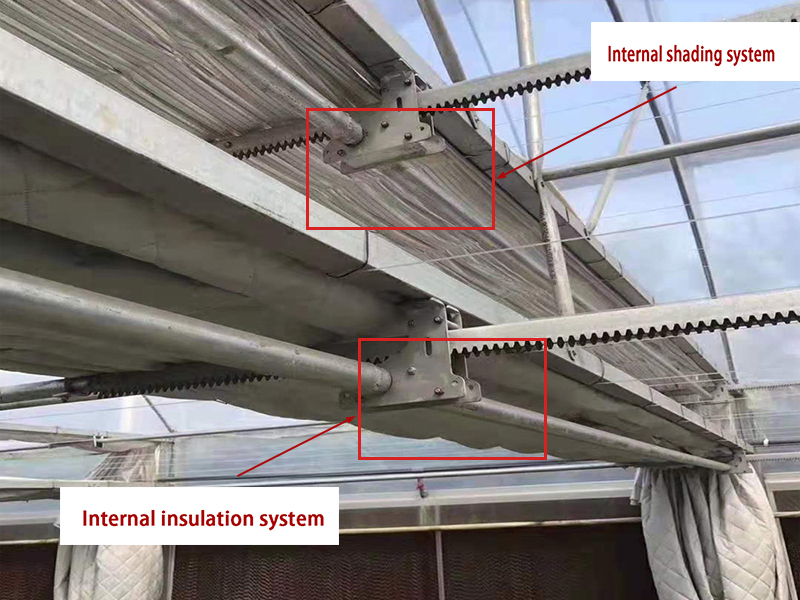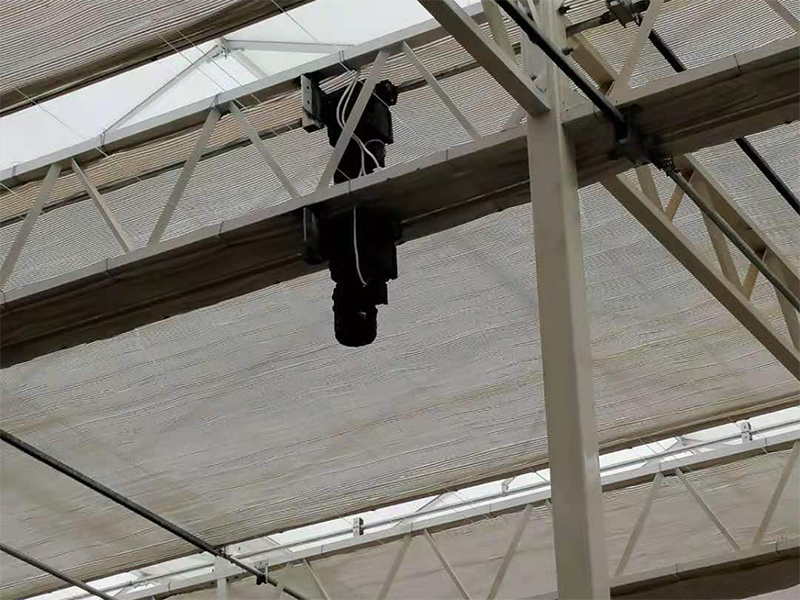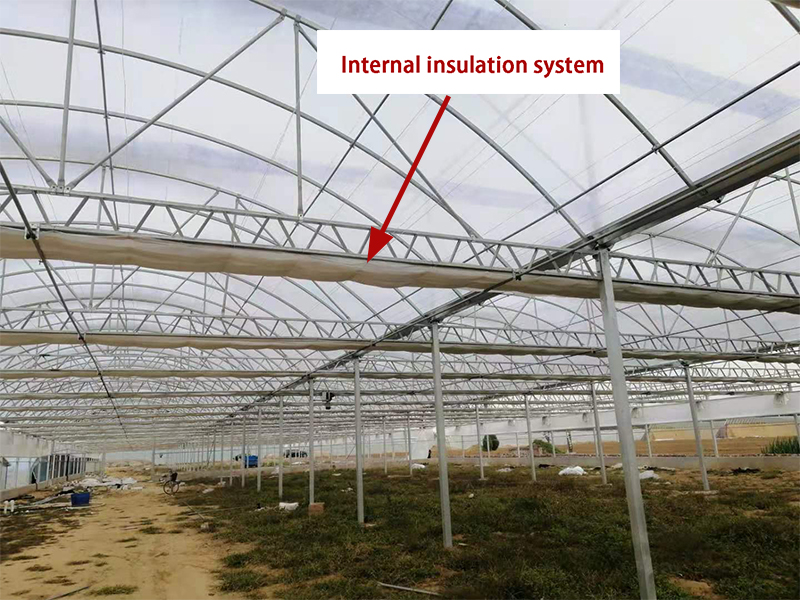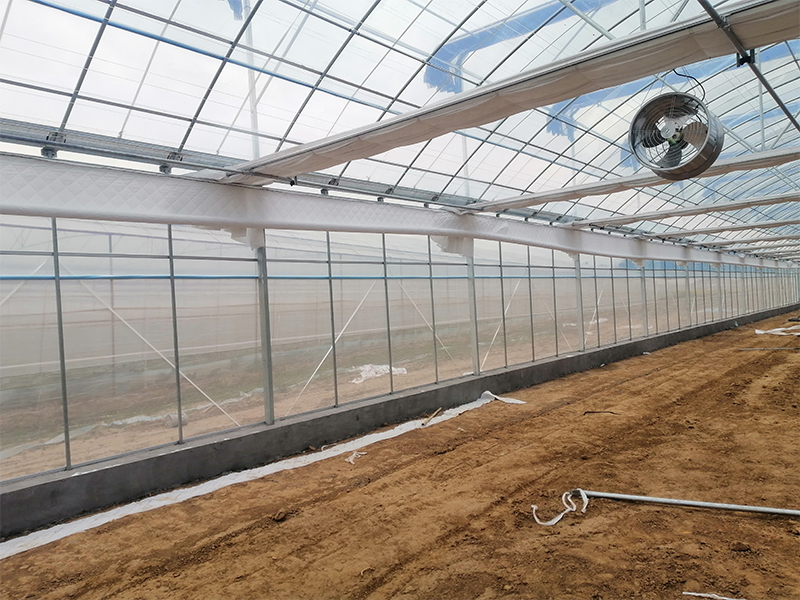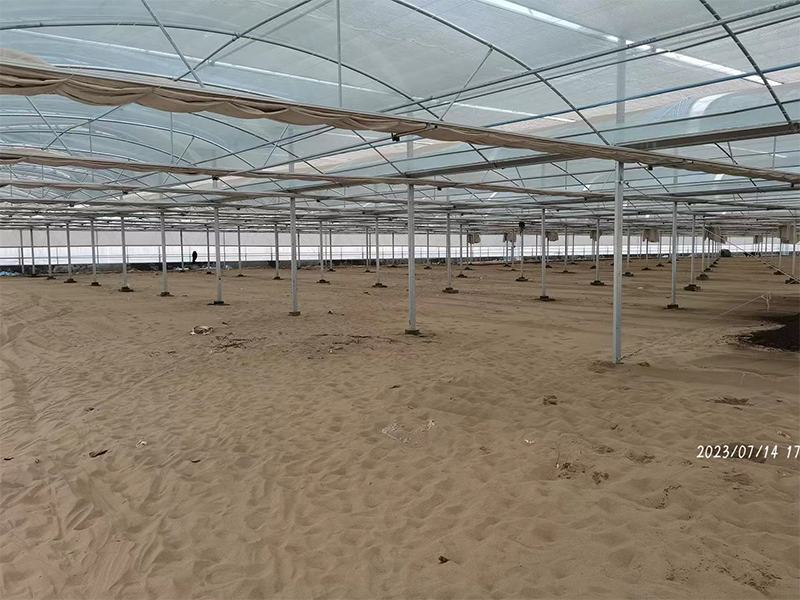| In facility agriculture, the internal shading system and internal insulation system play a very important role. The specific introduction is as follows: |
| The function of internal shading 1. Adjusting light: The internal shading system usually uses materials such as shading nets or shading fabrics, which can evenly scatter the light entering the greenhouse without affecting the overall structure and lighting of the greenhouse. This can prevent crops from being exposed to overly strong direct light, avoid leaf scorching, and at the same time ensure that crops can receive sufficient scattered light, which is conducive to the progress of photosynthesis. 2. Lowering temperature: Internal shading can effectively prevent some heat from entering the greenhouse, reducing heat accumulation inside the greenhouse. When sunlight shines on the shading material, part of the heat is absorbed and reflected by the shading net, reducing the extent of the temperature increase inside the greenhouse. In addition, internal shading can also reduce the loss of heat from the greenhouse to the outside at night, playing a certain role in heat preservation and helping to maintain the relative stability of the temperature in the greenhouse both day and night. 3. Regulating humidity in the greenhouse: By adjusting the amount of sunlight entering the greenhouse through shading nets, the humidity inside the greenhouse can be reduced to a certain extent. When the humidity inside the greenhouse is too high, appropriately reduce shading to allow more sunlight to enter and increase the temperature inside the greenhouse to accelerate water evaporation and dehumidification. When the temperature is too high and the humidity is too low, increase shading, reduce direct sunlight, lower the temperature, prevent plants from losing water due to excessive transpiration, and maintain an appropriate humidity inside the greenhouse. 4. Protecting crops: It can provide a suitable growth environment for some crops that are sensitive to light and temperature, preventing them from being harmed by strong light and high temperature, which is conducive to improving the quality and yield of crops. For instance, when growing leafy vegetables such as lettuce and spinach in summer, internal shading can effectively reduce the intensity of light and temperature, making the vegetable leaves more tender and of better quality. |
Internal insulation Heat preservation in greenhouses is one of the core links in greenhouse environmental regulation, playing a crucial role in multiple aspects such as crop growth, yield and quality, as well as production benefits. It can extend the growth cycle of crops, break through seasonal restrictions, enable crops to be brought to market earlier or later, and achieve off-season production. Greenhouse insulation is achieved through physical barriers, heat storage, artificial intervention and other means to create a stable warm and hot environment. Its core value lies in breaking through climate limitations, ensuring crop growth and improving production efficiency. In practical applications, it is necessary to combine local climatic conditions (such as emphasizing thick wall insulation in high-latitude regions and focusing on preventing short-term low temperatures in winter in low-latitude regions), crop types (warm-weather crops require higher insulation standards) and economic costs to select personalized insulation solutions, so as to achieve the dual goals of energy conservation and increased production. |
|
|
|

